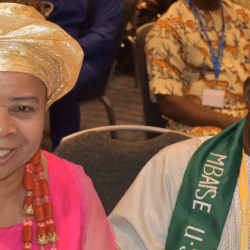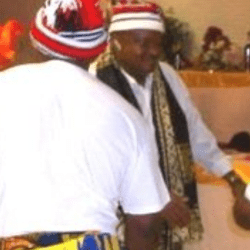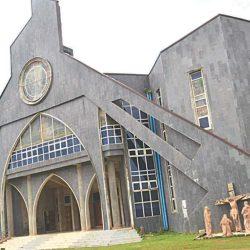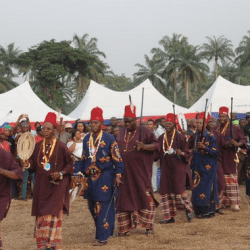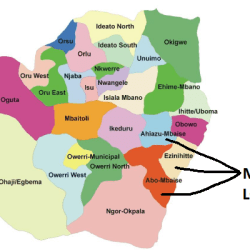There are many oral traditions as regards the origin of Mbaise people.
Nfunala by Ekwerazu and Ahiara, claim that the people did not migrate, instead their ancestors were created in the present location.
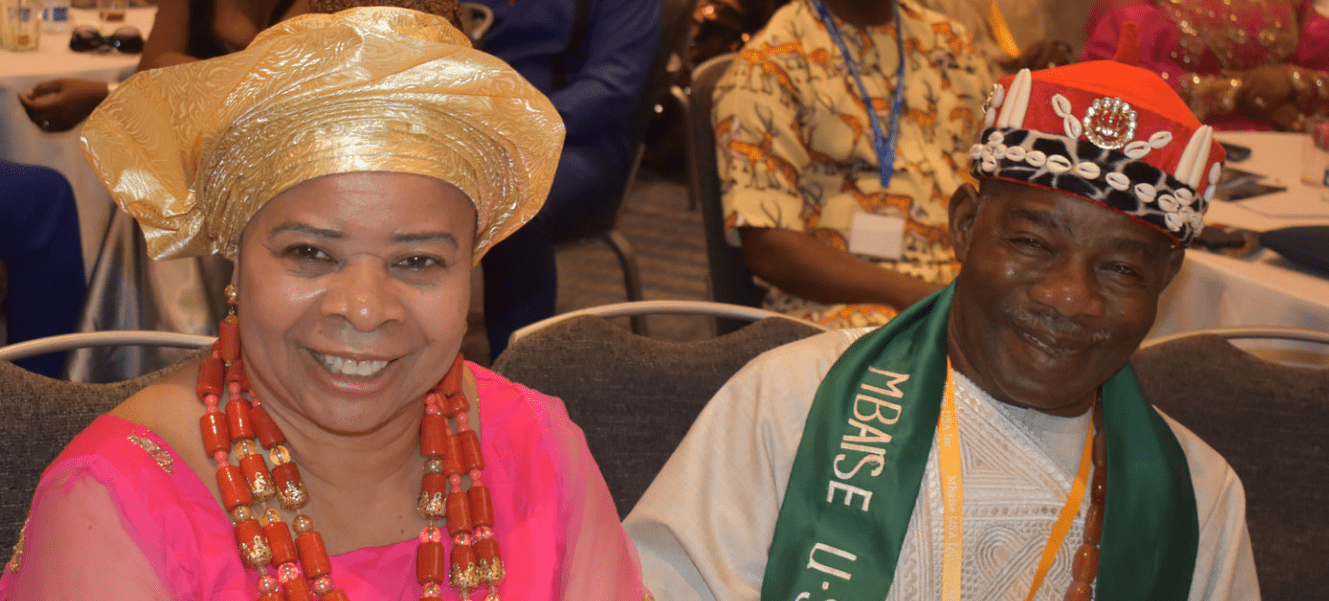
Oboama na Umunama in Ezinihitte believe Orie-Ukwu, was where God (Chineke) came down to earth and created people of the world, who migrated to their present location.

Another myth suggests a relationship with Ngwa clan.
According to tradition while the people where migrating they stopped to drink and eat yam.
As the River Imo was rising the people of Ngwa, “Ndi Ngwa Ngwa” (fast fast) picked up their yam and ran across the river to the other side leaving the people of Mbaise “Ndi-Ohuhu” (the roasters).
Mbaise colonial era
The name Mbaise never existed during the early colonial era.
Before 1940, the area was an array of villages located side by side. Ahiara, Onicha, Nguru, Ezinihitte and Ohohia were some of the prominent villages.
The area of modern day Mbaise, formed part of the Niger Coast Protectorate created on 1 February 1896, by the British. Sir Ralph Moor was the Commissioner and Consul-General. In 1900, he became the High Commissioner of Southern Nigeria Protectorate, formed by the merger of Niger Coast Protectorate and the chartered territories of the Royal Niger Company.
Hostility between the Mbaise inhabitants and the British developed during the Aro War, which was a major route taken by the British soldiers as part of the invasion to fight Aro. It was claimed that the military often harassed the local inhabitants of Mbaise.
Death of Dr Stewart
The ongoing conflict culminated in the death of Dr. Stewart on 16 November 1905, who was travelling by bicycle from Owerri to Calabar, to serve as a medical officer in the military. On passing through Udo, he reached Ezinihitte where he was confronted by the inhabitants who thought he was Douglas, the despised District Commissioner.
He was taken to the central market, Afor Ukwu Onicha, where he was killed, with his body parts cut into pieces and shared amongst the villages. As the story goes his bicycle was tied to tree to prevent it from travelling back to Owerri..
The resistance of the Mbaise natives to the British colonial control, was the most heavily fought war in the Igbo province following the Aro war. It was the fierce confrontation during the early British colonial era, which created the negative image of Mbaise people as dangerous. The negative image continued to develop during the colonial era and was spread throughout the region. The region was frequently patrolled by British troops.
Creation of Mbaise
From the advent of the colonial period c.1900, the British system of administration, governed the Igbo Mbaise region by “indirect rule”, through intermediaries.
They established native courts with administration units and loyal warrant chiefs to carry out their directives. The “indirect rule” imposed on Mbaise had no regard to existing Igbo structures in particular the patrilineage ( ụmụnna ), the cornerstone of Igbo structure.
The “ụmụnna” defines the arrangement of every individual in a family structure and describes their social position in the community.The British also had disregard for titles, social groups and age grades, which often afforded status and influence within the democratic structure of the Igbo village.

In 1931, an intelligence report on the study of Ekwerazu and Ahiara, Owerri Division, was written by Mr G. I. Stockley, Assistant District Officer. The report which was certified by the Major H.C. Stevenson District Officer, amongst other challenges sought to address the problems of the internal administration.

The region which was volatile, came under the jurisdiction of the Nguru Native court, which was destroyed on 10 December 1929 during the Women’s Riot. The report noted that there had been three distinct attempts to address the administrative shortfalls in the region, all of which had failed.

The report proposed to merge Agbaja, Ezinihitte, Ekwerazu and Ahiara into a federation in the future, the first time such an administrative structure had been formed.

In 1943 the merger of Agbaja, Ahiara Ekwerazu, Ezinihitte and Ovoro was completed under the Native Authorities Ordinance No.17 of 1943.

Mba (village/town) ise (five) was created from the five communities or clans which emerged from the British, colonial, native courts.
The native courts were located in:
- Ekwerazu – Uzuaku-Obohia in the North
- Ahiara – Orie Ahiara in the North
- Ezinihitte – Itu in the East
- Oke-Uvoro – Uvuru in the South
- Agbaja – Enyiogugu in the West
Reforms during colonial administration
Most of Igbo land including Mbaise resisted the British colonial rulers in many ways, manifesting in a series of violent wars and battles.
The Women’s War of 1929 was the breaking point, which redefined the history of colonial administration in Igbo land and the entire Eastern Nigeria. In 1930, the British set up a commission of inquiry, which documented gross failings and fundamental flaws by the colonial administration. The report led to urgent reforms, which created “native authorities” under the Native Authority Ordinance (No. 43 of 1933).
The formation of councils removed the practice of the warrant chiefs and spread authority among council members. Every clan under the Owerri Province formed part of a council, which gave rise to the modern day Mbaise.
Owerri District Province
In 1905, the location of modern Mbaise came under the Owerri district which was created 1902, with Harold M Douglas as the first District Commissioner. In 1897, Douglas arrived in Nigeria and was a major contributor to Aro expedition. The people knew him as a brutal autocratic ruler. He was a hard task master that used punitive military action to punish anyone who opposed his authority. He was renowned for physically assaulting any Igbo person who failed to follow his orders.

With Douglas in charge of the newly created Owerri District, the colonial administration established district officers, government houses, courthouses, warrant chiefs and road construction. Using forced labour, Douglas was keen to construct a road network, which opened up the hinterland to enable easy trade access for the British administration.
From his appointment up until to 1906 when he was transferred to Onitsha, Douglas had constructed over two hundred miles of roads in the Owerri district. As a notorious man he became known by many names such as the road-building whiteman (Beke ogbu ama) and beke ojoo (bad whiteman). It is speculated that Owerri, having the best road network in Eastern Nigeria, was the reason it remained, the only major, colonial city in the region, not connected to the rail network by the British colonial administration.
Following 1960 Nigerian independence, three local government areas (LGA) were created from the five clans as part of the new Imo state carved out in 1976, from the former East Central State. Ahiazu Mbaise LGA from Ahiara and Ekwerazu, Aboh Mbaise LGA from Oke-Ovoro and Agbaja and Ezinihitte Mbaise LGA excluding Umu-Ohiagu and Isu-Obiangwu which merged with Ngor-Okpala.
Reference
https://www.mbaiseonline.com/history/historical-background-of-mbaise/
